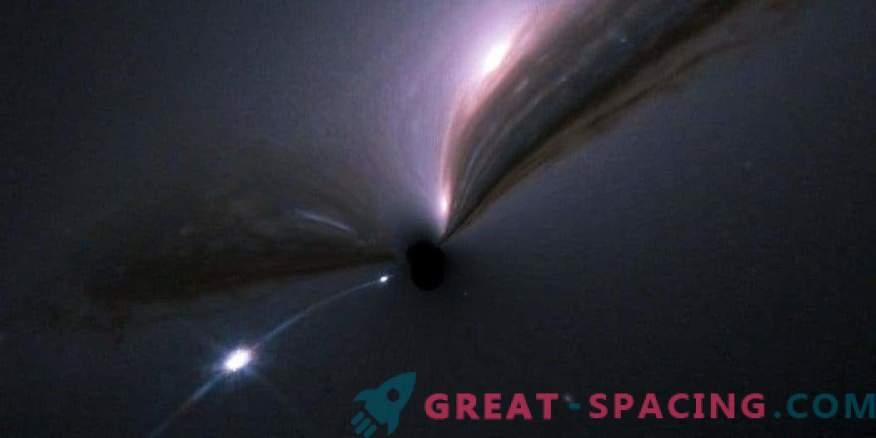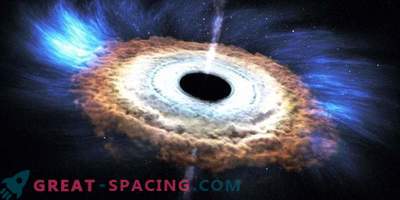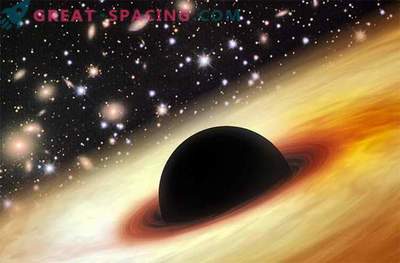
The artistic vision of a supernova and its galaxy, as they appear, if they gravitationally lens them through an intermediate black hole
Scientists have eliminated black holes from the list of possible sources of most of the elusive dark matter scattered throughout the universe. It is believed that dark matter makes up more than 80% of matter in space, but still remains the most mysterious substance.
In 2015, LIGO terrestrial vehicles first recorded gravitational waves from two colliding black holes. This discovery led some astronomers to believe that black holes are capable of acting as a source of dark matter. However, a new study refutes this assumption.
A group of astronomers analyzed 740 of the brightest supernovae found today. The findings suggest that black holes can hold only 40% of the dark matter of the universe. Scientists are back to the starting point and there are fewer good options. Researchers did not notice that intermediate black holes capable of functioning as gravitational lenses magnify or brighten supernovae. If black holes were the main source of dark matter, then it would have turned out to find more enlarged supernovae that arose immediately after the Big Bang. Therefore, most dark matter cannot hide only in black holes or any similar objects, including massive compact halos (MACHO).
We also studied 1048 black holes. Researchers expect that further analysis will be able to reduce the likelihood even more and show that black holes are responsible only for 23% of the dark matter of the Universe.











































